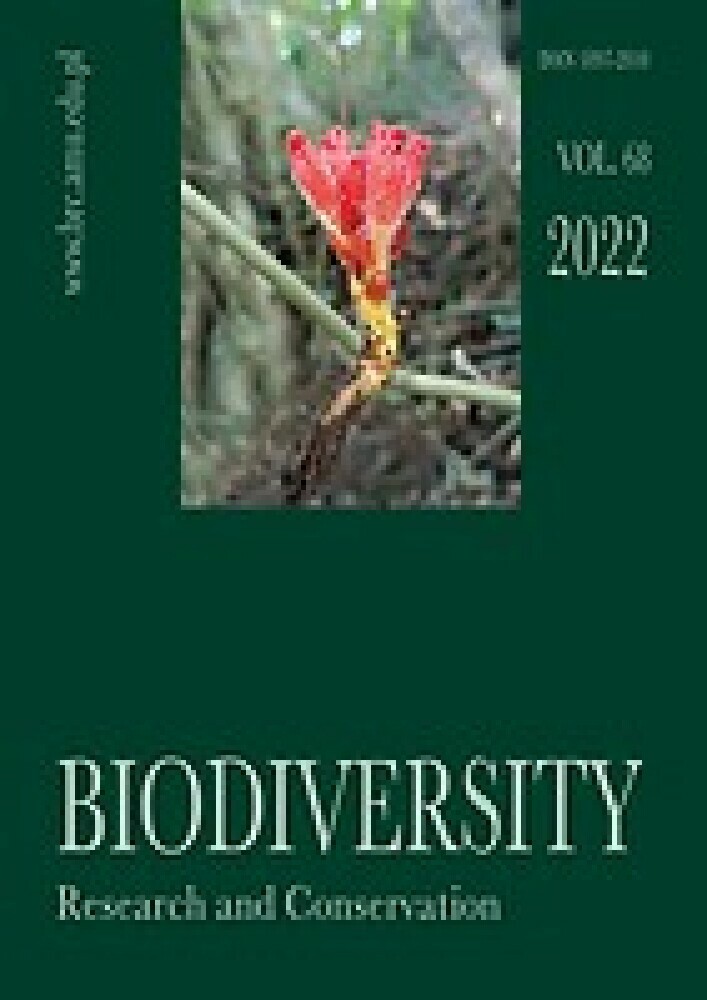Abstract
In the Algerian steppe (Rogassa) overgrazing led to the reduction of the surface of the pasture land and its biodiversity. The objective of this work was to highlight the importance of the protected land in maintaining biodiversity and preserving the degraded areas. A mixed sampling for the two different sites was adopted, where fifty floristic surveys were conducted using the Braun-Blanquet method. The analysis of the real biological spectrum of the unprotected land was marked by the strong dominance of the therophytes. However, in the protected land the chamaephytes dominated all of the biological types. The analysis of the biogeographic spectra revealed the reappearance of the endemic species (+3%). The Shannon Index was very important in this matter (2.43). The Student’s t-test of the biodiversity’s index showed a highly significant difference between the two sites. The ascending hierarchical classification revealed that the protected land is subdivided into four groups dominated respectively by: Macrochloa tenacissima, Lygeum spartum, Artemisia erba-alba and Hordeum murinum. The results of the Jaccard dissimilarity index indicated a strong difference of the order of 80% between the two areas.
References
Achour H., Aidoud A., Aidoud F., Bouzenoune A. D. M., Djebaili S., Djellouli Y. & Aidoud A. 1983. Contribution à L'étude des écosystèmes steppiques du Sud Oranais. U.S.T.H.B, Alger, 232 pp.
Aidoud A. 1983. Contribution à l'étude des écosystèmes steppiques du Sud oranais: Phytomasse, productivité primaire et applications pastorales. Thèse doct. 3°cycle. 180 pp. USTHB. Alger.
Aidoud A. 1989a. Les écosystèmes steppiques pâturés d'Algérie: fonctionnement, évaluation et dynamique des ressources végétales. In. Thèse Doct Univ Sci Technol H. Boumédiene Alger 250 pp.+ ann.
Aidoud A. 1989b. Les steppes à Alfa: Ressources en perdition. Annale de l'Institut National Agronomique. El-Harrach, Alger 13(1): 80-90.
Aidoud A., Aidoud-Lounis F. & Slimani H. 1998. Effects of grazing on soil and desertification: a review from the southern Mediterranean rim. In: V. P. Papanastasis & D. Peter (eds.). Ecological basis of livestock grazing in Mediterranean ecosystems, pp. 133-148. European Commission EUR 18308.
Aidoud A. & Aidoud F. 1987. Les groupements à Artemisia herba-alba, à Noaea mucronata et à Lygeum spartum. In: S. Djebaili (ed). Rapport phytoécologique et pastoral de la Wilaya de Djelfa, pp. 93-135. Unité de Recherche sur les ressources Biologiques Terrestres IU. STHB, Alger.
Aidoud A., Le Floc'h É. & Le Houérou H. N. 2006. Les steppes arides du nord de l'Afrique. Science et changements planétaires/Sécheresse 17(1): 19-30.
Amgha F. 2012. Restauration et réhabilitation des écosystèmes steppique: effet de la mise en défens et de l'introduction des plantes fourragères sur la biodiversité, le sol et sa surface. Thèse de doctorat. USTHB, 165 pp., +Ann.
Barbero M., Bonin G., Loisel R. & Quézel P. 1990. Changes and disturbances of forest ecosystems caused by human activities in the western part of the Mediterranean basin. Vegetatio 87(2): 151-173.10.1007/BF00042952 https://doi.org/10.1007/BF00042952 DOI: https://doi.org/10.1007/BF00042952
Benabadji N., Aboura R. & Benchouk F.-Z. 2009. La régression des steppes méditerranéennes: le cas d'un faciès à Lygeum spartum L. d'Oranie (Algérie). Ecologia mediterranea 35(1): 75-90.10.3406/ecmed.2009.1390 https://doi.org/10.3406/ecmed.2009.1390 DOI: https://doi.org/10.3406/ecmed.2009.1390
Benabdeli K. 1989. Étude diagnostic sur la situation de la steppe à alfa dans la région nord occidentale de l'Algérie. 17 pp. Rapport, bilan ORDF Tiaret.
Boucherit H., Benabdeli K. & Benaradj A. 2017. Caractérisation floristique de la steppe a Hammada scoparia dans l'atlas Saharien oranais (Naama-Algérie). Revue Agrobiologia 7(2): 483-490.
Braun-Blanquet J. 1952. Les groupements végétaux de la France méditerranéenne. Dir. Carte Group. Vég. Afr. Nord. 292 pp. Centre National de la Recherche Scientifique.
Daget P. 1980. Sur les types biologiques botaniques en tant que stratégie adaptative (cas des thérophytes). Recherches d'écologie théorique, les stratégies adaptatives. Maloine, Paris, pp. 89-114.
Djebaili S. 1978. Recherches phytosociologiques et écologiques sur la végétation des hautes plaines steppiques et de l'Atlas saharien algériens. Alger.
Djebaili S., Djellouli Y. & Daget P. 1989. Les steppes pâturées des Hauts Plateaux algériens. Fourrages (Versailles) 120: 393-400.
Emberger L. 1930. La végétation de la région méditerranéenne. Essai d'une classification des groupements végétaux. Revue Générale de Botanique, pp. 42-46.
Haddouche I., Toutain B., Saidi S. & Mederbal K. 2008. Comment concilier développement des populations steppiques et lutte contre la désertification?: cas de la wilaya de Nâama (Algérie). New Medit. 3: 25-31.
Houamel S. 2018. Les steppes d'armoise blanche (Artemisia herba-alba Asso) dans l'Est Algérien: répartition actuelle, biodiversité, dynamique et conditions de durabilité. Thèse de doctorat, Université Mohamed Kheider-Biskra.
Kadik L., Khelifi H., Mediouni K. & Nedjraoui D. 1983. Carte de l'occupation des terres de l'Algérie-Carte pastorale de l'Algérie. Biocénoses. Bull. Ecol. Terr. URBT, Alger.
Le Houérou H. N. 1969. La Végétation de la Tunisie steppique: structure, écologie, sociologie, répartition, évolution, utilisation, biomasse (productivité, avec références aux végétations analogues d'Algérie, de Libye et du Maroc). Annales de l'Institut National de la Recherche Agronomique de Tunisie 42(5): 1-643 + Annexes.
Le Houérou H. N. 1995. Considérations biogéographiques sur les steppes arides du nord de l'Afrique. Science et changements planétaires/Sécheresse 6(2): 167-182.
Nedjraoui D. & Bédrani S. 2008. La désertification dans les steppes algériennes: causes, impacts et actions de lutte. Vertigo 8(1): 15.
Ozenda P. 1977. Flora of the Sahara. CNRS 2ed. Paris.
Salemkour N. 2015. Intérêt de la mise en défend dans la restauration des parcours steppique dégradés. Thèse de Doctorat. Université Badji Mokhtar Annaba. Algérie.
Taibaoui B., Douaoui A. & Bouxin G. 2020. Diversité floristique de la steppe sud algéroise: cas de la région de Djelfa (Algérie). Lejeunia, revue de botanique 203:1-41.
License
Copyright (c) 2022 Benyekhlef Benkaddour, Ahmed Megharbil, Réda Kechairi, Kassim Boudjelal Safir

This work is licensed under a Creative Commons Attribution-NonCommercial-NoDerivatives 3.0 Unported License.





